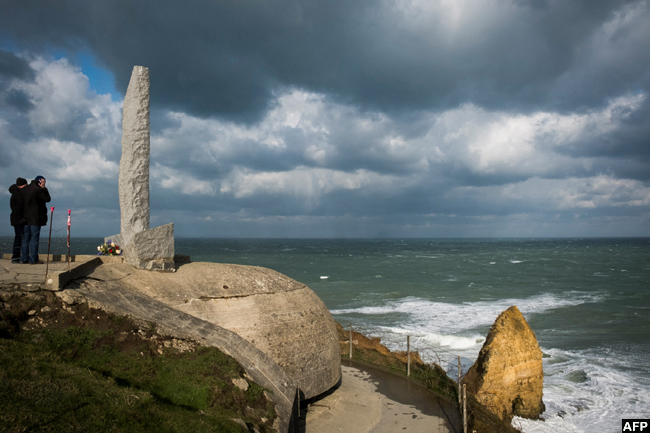Poison gas: World War I's weapon of terror
Officers hoped the vomiting, suffocation and burns caused by poison gases would force troops to abandon positions in what quickly became a standoff between German and allied forces.
PIC: French soldiers moving into attack from their trench during the Verdun battle, eastern France, during the First World War. (AFP)
HISTORY
On April 22, 1915, a greenish fog drifted over the battlefield north of Ypres in Belgium, choking to death some 5,000 French soldiers and heralding a new type of terror on the Western Front.
World War I saw the first widespread combat use of modern chemical weapons, starting with the 168 tons of chlorine released by the Germans over the trenches near Ypres.
Officers hoped the vomiting, suffocation and burns caused by poison gases would force troops to abandon positions in what quickly became a standoff between German and allied forces.
They also had a deep psychological impact, forcing soldiers to keep masks at the ready for fear of falling victim to a silent killer.
"Gas masks and their grotesque appearance became the ultimate symbol of a man turned into a mechanised, dehumanised phantom by modern warfare," said Doran Cart, a curator at the National World War I Museum in Kansas City, Missouri.
"That had a huge impact on civilians," he added.

The Germans' use of chlorine prompted a chemical arms race in which scientists and military leaders worked hand-in-hand to develop more lethal weapons.
French researchers soon developed phosgene, with a more subtle "mouldy hay" odour that was harder to detect and the ability to cause suffocation hours after being inhaled.
It was quickly copied by the Germans as both sides sought agents which would seep into trenches and bunkers.
'Fighting for breath'
But the most infamous -- and deadliest -- was mustard gas, in reality an oily vapour first used by the Germans in July 1917, again near Ypres.
Known as the "King of Battle Gases", it acted by contact instead of having to be inhaled, getting through clothing to cause severe burns.
"It didn't always kill but the burns impaired people for a long period of time and required a very long nursing," said Edward Spiers, a professor of strategic studies at Leeds University in Britain.
"It slowed everything down. People had to try to decontaminate whole areas" before attempting to get through it, said Spiers, author of "A History of Chemical and Biological Weapons".

US Army General John Pershing reviewing the 5th Infantry troops during the First World War. (AFP/US Army)

A French soldier shaving the beard of his comrade in the trenches during the First World War. (AFP/Historial Museum of WWI of Peronne)

French soldiers taking care of a wounded one on the front during the First World War. (AFP/Historial Museum of WWI of Peronne)
Overall an estimated 90,000 people were killed by gas attacks and a further 1.2 million injured, sometimes when the poisonous clouds released by artillery shells drifted back into an attacker's lines.
But despite the relatively small number of deaths compared with the 9.7 million soldiers killed in total during the war, the fear and suffering caused by chemical arms became symbols of a harrowing new era in modern warfare.
"I wish those people who talk about going on with this war whatever it costs could see the soldiers suffering from mustard gas poisoning," the British nurse Vera Brittain wrote in her memoir "Testament of Youth".
"Great mustard-coloured blisters, blind eyes, all sticky and stuck together, always fighting for breath, with voices a mere whisper, saying that their throats are closing and they know they will choke", she wrote.
'Psychological scar'

The grave of Augustin Trebuchon - the last French soldier to fall in World War I at Vrigne-Meuse
After the war ended officials quickly pushed to outlaw chemical weapons in war, signing the Geneva protocol in 1925, which nonetheless failed to set up a system for monitoring or punishing their use.
"The use of such weapons left a psychological scar in ways that conventional weapons did not," Spiers said.
"In most societies that used them the use of chemical warfare was vilified, but it was never quite removed from the world's arsenal," Spiers added.
As soon as 1926, French and Spanish forces would employ them against Moroccan rebels in the Rif Mountains.
"It truly is, and this hasn't changed since World War I, a terror weapon. It creates terror," Cart said.
But even though they are still used today -- Syrian President Bashar al-Assad has been accused of repeatedly gassing rebels and civilians in his war-torn country -- only in the first World War were poison gases used on a large scale in combat.
"What's occurring today is not primarily military but used against civilians," Cart said.
Also related to this . . .

A Greek Air Force F-16 takes part in a military parade in Thessaloniki on Sunday during the celebrations marking Greece's National "Oxi" (No) Day, commemorating Greece's refusal to accept the ultimatum advanced by fascist Italy in 1940 during World War II

A memorial of a wounded soldier is pictured in "Omaha Beach", Vierville-sur-Mer, north-western France, on October 28, 2018. - Omaha Beach is the name given to one of the five beaches where American soldiers landed in Normandy on "D-Day", June 6, 1944

Tourists visit the World War II du Hoc Ranger Monument between Omaha beach and Utah beach on October 28, 2018 in Cricqueville-en-Bessin. - Omaha Beach is the name given to one of the five beaches where American soldiers landed in Normandy on "D-Day", June 6, 1944